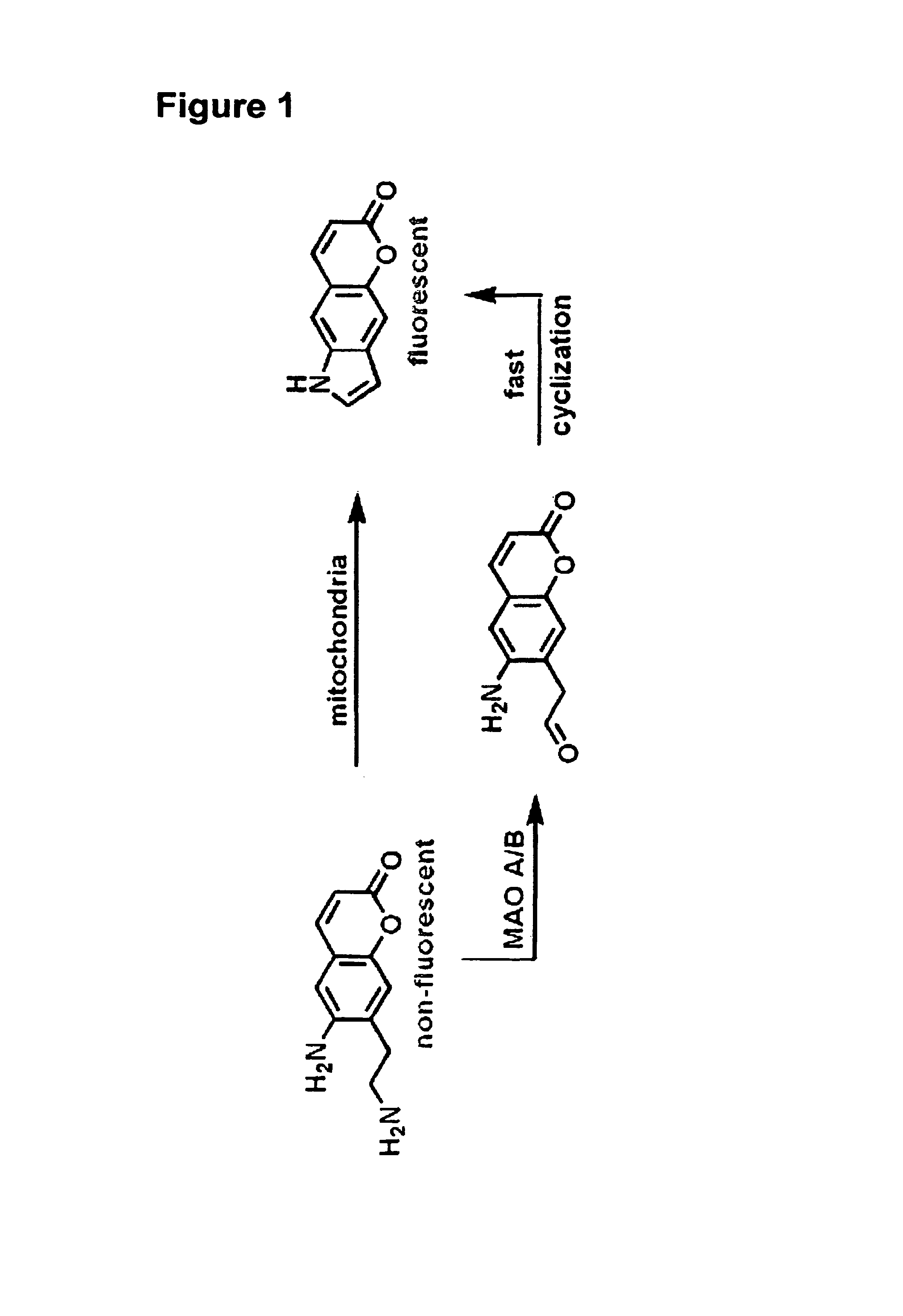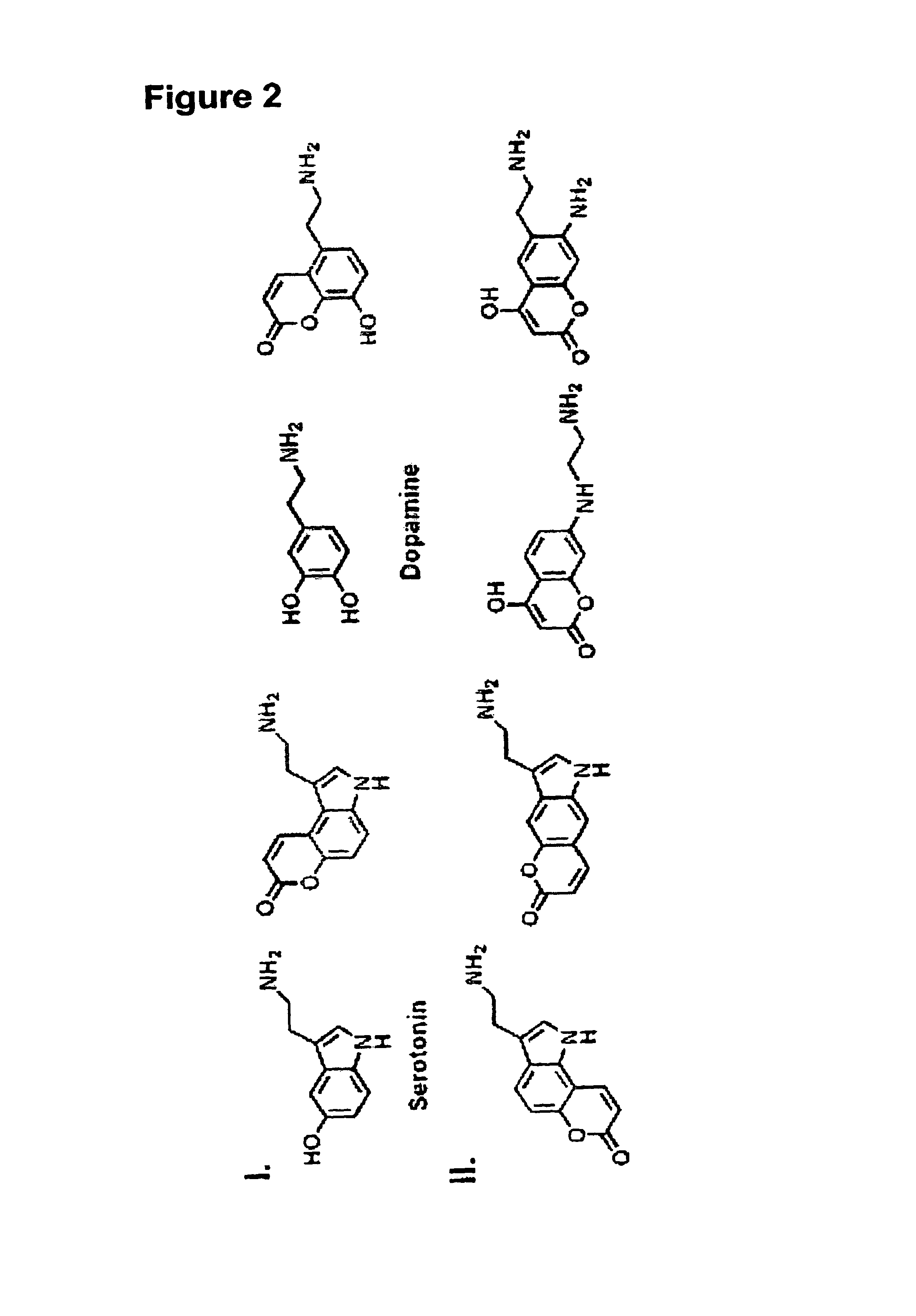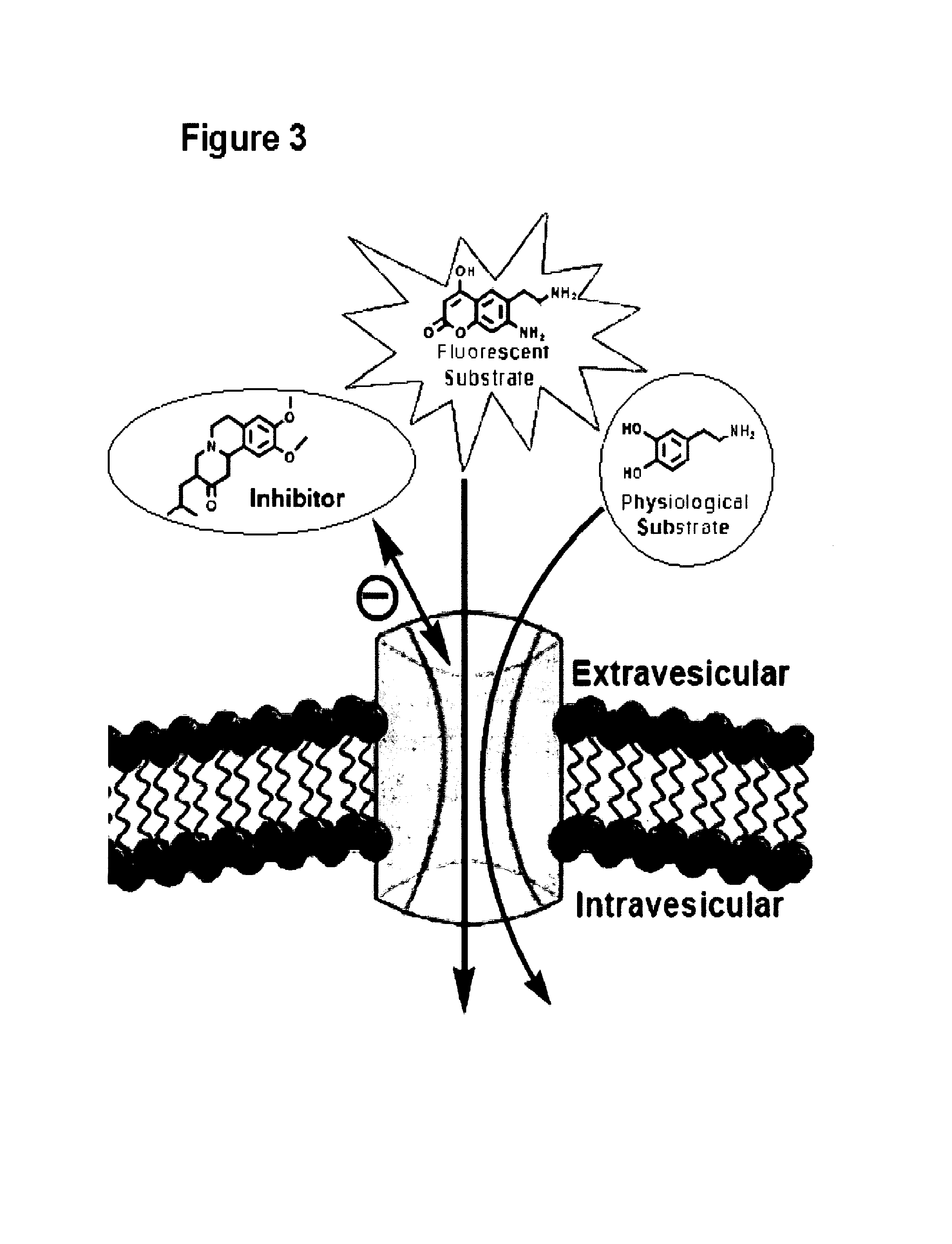Fluorescent substrates for monoamine transporters as optical false neurotransmitters
a monoamine transporter and fluorescent substrate technology, applied in the field of fluorescent substrates for monoamine transporters as optical false neurotransmitters, can solve the problems of poor spatial resolution in brain tissue, inability to readily monitor transmission in living cells or brain slices, and current molecular imaging tools that cannot enable single terminal spatial resolution monitoring of vesicle loading and releas
- Summary
- Abstract
- Description
- Claims
- Application Information
AI Technical Summary
Benefits of technology
Problems solved by technology
Method used
Image
Examples
example 1
[0459]Current efforts to advance the understanding of neurotransmission and synaptic plasticity are limited by available experimental approaches that either lack spatial resolution of individual synaptic terminals or provide no information about presynaptic processes controlling vesicular neurotransmitter filling and release—issues that are particularly important for dopamine and other monoamine neurotransmission. We describe a novel optical approach based on fluorescent false neurotransmitters (FFNs) that act as optical tracers, providing the first means to directly visualize neurotransmitter uptake, redistribution, and release from individual dopamine terminals. FFNs were designed by targeting the synaptic vesicular monoamine transporter (VMAT) that transports dopamine and other aminergic neurotransmitters from cytoplasm into synaptic vesicles. Like dopamine, exemplified FFN probe 511 selectively accumulates in chromaffin cell granules and dopamine terminals in the mouse striatum,...
example 2
[0476]Biological assays were designed to investigate the ability of the fluorescent probes to function as VMAT substrates. In designing such assays, it is important to differentiate between a competitive inhibitor and competitive substrate for VMAT; both bind to the transporter in the active site, but only the latter is transported into the vesicle (FIG. 3).
[0477]Chromaffin cells are an excellent model system as the cytoplasm of these cells in culture is almost completely filled with large dense core vesicles that accumulate catecholamines by VMAT.
[0478]After establishing the probes as substrates for VMAT in isolated granules, the compounds were examined in chromaffin cells. If necessary, metabolism of the probes by MAO (present in mitochondria) may be reduced by the addition of a suitable inhibitor (deprenyl for MAO B, clorgyline for MAO A) or by simply methylating the α-position of the amine (10, 14). In accordance with this, the compounds as set forth in this disclosure and methy...
PUM
| Property | Measurement | Unit |
|---|---|---|
| total weight | aaaaa | aaaaa |
| size | aaaaa | aaaaa |
| excitation wavelengths | aaaaa | aaaaa |
Abstract
Description
Claims
Application Information
 Login to View More
Login to View More - R&D
- Intellectual Property
- Life Sciences
- Materials
- Tech Scout
- Unparalleled Data Quality
- Higher Quality Content
- 60% Fewer Hallucinations
Browse by: Latest US Patents, China's latest patents, Technical Efficacy Thesaurus, Application Domain, Technology Topic, Popular Technical Reports.
© 2025 PatSnap. All rights reserved.Legal|Privacy policy|Modern Slavery Act Transparency Statement|Sitemap|About US| Contact US: help@patsnap.com



